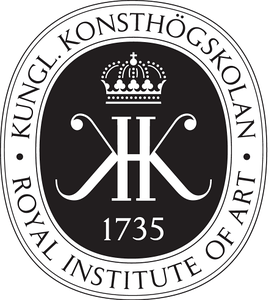With Energy Beyond These Walls
January 18–February 20, 2018
Flaggmansvägen 1
SE-111 49 Stockholm
Sweden
T +46 8 614 40 00
info@kkh.se
Juan Downey: With Energy Beyond These Walls, curated by Stefanie Hessler.
With Energy Beyond These Walls examines what the Chilean artist Juan Downey referred to as “invisible architecture,” a self-reflexive and feedback-driven, proto-cybernetic network of energies and connections. The exhibition, conceived as an open, malleable system, features three of the artist’s seminal works, The Laughing Alligator, The Looking Glass, and Shifters, as well as ongoing contributions by artists currently enrolled in the Royal Institute of Art’s BA and MA programs in Fine Art.
The exhibition launches the spring 2018 program of the ongoing series E2-E4, which invites artists, critics, curators, and theorists to give public lectures, and to develop exhibition displays at Rutiga Golvet, a newly refurbished space in the Royal Institute of Art’s main building on Skeppsholmen, Stockholm.
Contributors to the program during the spring include, among others: artist Lina Selander, on the exhibition as a (spiritualist) medium; artist and professor Ane Hjort Guttu, on the politics of the own voice; architectural theorist Felicity Scott, co-director of the CCCP program at Columbia GSAPP, on a technology in the service of the people; Jeff Kinkle and Alberto Toscano, co-authors of Cartographies of the Absolute (Zero Books, 2015), on the cognitive cartographies of contemporary petropolitics; professor and cultural critic Diedrich Diederichsen, on late period Krautrock and the shift from trance to dance; and curators and editors Isabella Rjeille, Diego González and Amelia Venturino Arias, on self-organized publishing practices in the educational, cultural, and political contexts of Argentina and Brazil.
Also at Rutiga Golvet during the spring: magazine releases and presentations in the library; presentations and collaborations with students, teachers, and professors; seminars and assemblies, raves and events.
Spring Schedule
Lars Bang Larsen and Kim West: A Vast Network of Pipes
January 25, 5pm
Lina Selander: The Exhibition as Ether (Part 2)
February 22, 5pm
Jeff Kinkle and Alberto Toscano: Money That Grows
March 9, 5pm
Brody Condon: TBA
Opening: March 22, 5pm
Ane Hjort Guttu: TBA
April 19, 5pm
Diedrich Diederichsen et al: Trance Dance
May 3, 5pm
Felicity Scott: For a Technology in the Service of the People
May 17, 5pm:
Isabella Rjeille, Diego González, and Amelia Venturino Arias: Next Move
May 31, 5pm
About E2-E4
E2-E4 is the name of the most common opening move in chess, the one that sets the game in motion. E2-E4 is also the name of a program for theoretical activities and exhibitions at the Royal Institute of Art, Stockholm. “Theory” is here conceived not as academic superstructure or epistemic authority, but as orientation, as a first grasp of our own situation, and of its location in a wider system, network, or totality. In this sense, “theory” is what may allow us to begin, to go from the confusion of undefined possibility to the provisional determination of practice. The program explores the exhibition as a critical information system, in the service of education, aesthetic experience, and public dissemination.
E2-E4 is located at Rutiga Golvet in the school’s main building on Skeppsholmen. Between 1971 and 1973, the same space housed Filialen, an experimental annex to Moderna Museet, which hosted seminal exhibitions of early 1970s Swedish alternative culture such as My Home is Palestine (1971), Women (1972), and For a Technology in the Service of the People (1972). The E2-E4 program draws upon this legacy, while paying attention to the critical potentials of spatial display systems in a context of pervasive social integration of digital media and increasing balkanization of the public sphere.
Last but not least, E2-E4 is also the title of a famous minimalist composition from 1981 by Manuel Göttsching, founder of the Krautrock band Ash Ra Tempel. In 1989, three Italian producers sampled the track for their hit Sueño Latino, helping spawn the Italo House wave. That track was in turn remixed by Detroit techno producers Derrick May in 1992, and Carl Craig in 1994. The E2-E4 program celebrates this lineage through a series of rituals and events with their very own beat.
E2-E4 is created and organized by Royal Institute of Art guest professors Stefanie Hessler, Lars Bang Larsen, and Kim West.


